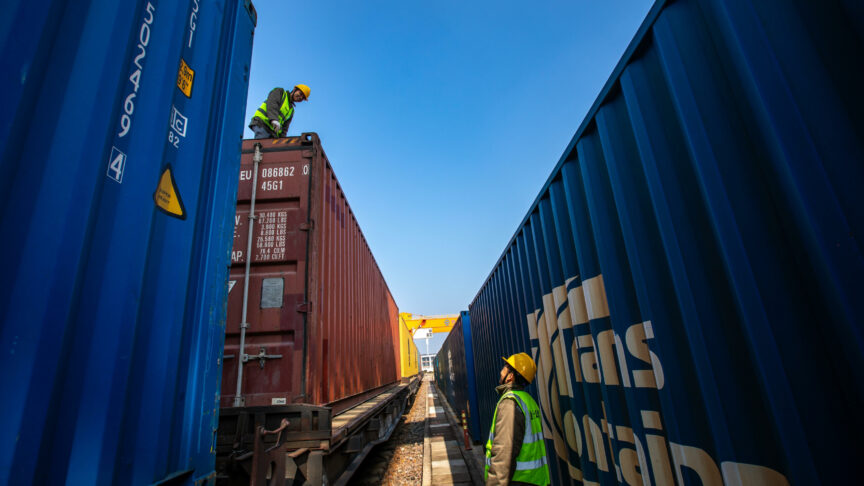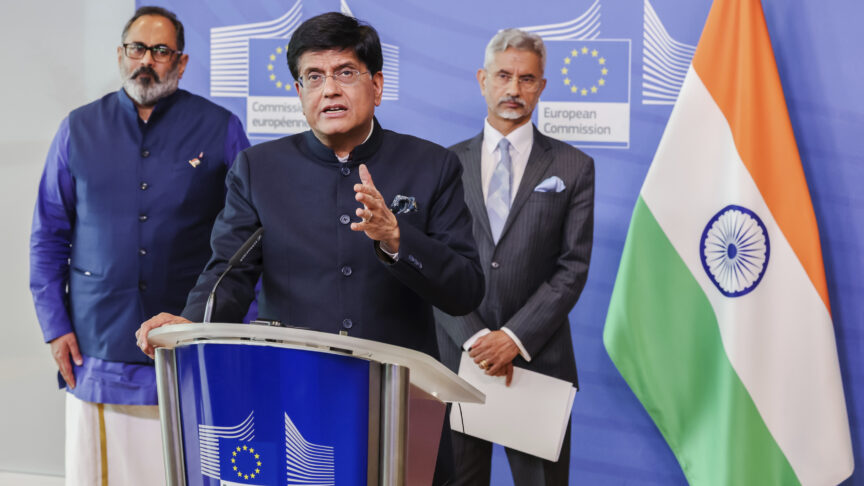Paying the China price: the costs of Chinese investment
The EU should not race to the bottom and match Chinese prices and standards but differentiate and provide quality rather than quantity in finance.
What is China’s One Belt, One Road (OBOR) initiative? Half a year of research and a dedicated issue of China Analysis have given us an insight into China’s new grand economic and diplomatic plan.
OBOR aims to link China to Europe, the Middle East and Africa, via routes that potentially cover 55 percent of the world’s GNP.
OBOR aims to link China to Europe, the Middle East and Africa, via routes that potentially cover 55 percent of the world’s GNP, 70 percent of its global population, and 75 percent of its known energy reserves. It is backed by significant financial resources and political will at the top, and while the outline of the plan is still fuzzy and continues to evolve, Chinese actors have dived in and already started labelling pretty much any project taking place beyond China’s borders as a component of this grand Silk Road enterprise.
While the action plan emphasises a wide range of objectives as diverse as people to people exchanges, custom harmonisation and communication network improvement, the main component and the most visible element of the plan so far is the infrastructure investments in roads, ports, railways and potentially airports along the road.
China seems to have entered a new stage of its development, where it wants to be more proactive internationally.
It remains hard to understand why China would commit to a plan of such monumental scale. What is clear is that China seems to have entered a new stage of its development, where it wants to be more proactive internationally, encourage a “new wave of opening” – this time by exporting rather than welcoming capital and technology – and support the potentially beneficial development of its neighbours.
This comes with distinctive “Chinese characteristics”, and has elements of questioning the current international order. Not only has China led the establishment of a new multilateral development bank, it is also promoting a “low cost” pattern of international development cooperation and financing based on cheap, seemingly unconditional financing for local projects, especially projects along the routes of China’s new Silk Roads but also elsewhere in the world.
In contrast to the conditional financing of Western countries, the EU, the Asian Development Bank or the World Bank, China offers partner countries even lower borrowing costs (with close to zero interest rates) with, apparently at least, no strings attached. And Chinese financing also has the advantage of being substantial and readily available, compared to traditional development financing that sometimes takes years to materialise. This process advantage may make China’s financing more appealing for recipient countries than multilateral or Western sources of financing. Indeed, Chinese investment has been sought also within Europe, where China talks about committing billions in infrastructure investments – notably to Eastern Europe in the context of the 16+1 forum.
Chinese investment has been sought also within Europe, where China talks about committing billions in infrastructure investments.
Looking at these factors, the country could soon crowd out all other players and here, as they have done in other areas, China might be able to promote a “low cost”, less conditional and less qualitative international order.
But despite this growing Chinese importance in the field of development and infrastructure finance, the EU would be unwise to engage in a race to the bottom to try to match China’s offers. While the appearance is that China’s loans offer low-cost financing, this is not matched by the reality. Indeed, there are many hidden costs to accepting Chinese financing.
First, while many Chinese loans are provided at close to zero percent interest, they impose the condition that the companies providing the underlying services, including infrastructure building, are Chinese, limiting the potential benefits for local companies and national economies. As a result, the benefits from the financed projects go back to China one way or another, regardless of the nominal interest rate. Second, these Chinese companies usually overcharge for their services, thus cancelling the financial benefit from a zero percent interest rate loan. Third, these companies often manage to negotiate favourable operational conditions, in terms of labour, environmental standards and material sourcing that further reduce the local benefits of the proposed loan. Overall, past experience suggests that while Chinese loans and investments appear to be cheap and unconditional, they often are costly and constrained.
While the appearance is that China’s loans offer low-cost financing, this is not matched by the reality. Indeed, there are many hidden costs to accepting Chinese financing.
And there is another concern. Today, China can afford cheap financing and loans to low-return projects in sometimes unstable countries. However, this will not last forever, and Chinese prices are bound to increase. The public finances will become more constrained due to the economic slowdown, and China will increasingly realise it cannot keep subsidising its state-owned enterprises (SOEs). Chinese labour prices will increase, making it less profitable to bring in Chinese workers for infrastructure work. And over time the Chinese government will become increasingly concerned with and constrained by the environmental and sustainability aspects of its projects. China’s “low cost” order may well soon become a “middle cost” one.
Therefore, here as in other areas, the EU’s strategy should not be to race to the bottom and match Chinese prices and standards but to differentiate and provide quality rather than quantity in finance.
EU’s strategy should not be to race to the bottom and match Chinese prices and standards but to differentiate and provide quality rather than quantity in finance.
In the first instance, the EU cannot afford to match Chinese prices, as it does not have the SOEs, the financial reserves or the mute public opinion that the Chinese rely on. Secondly, the EU should not want to compromise on standards such as sustainability and efficiency, as those are both beneficial and rational long-term objectives. Quality is what justifies higher prices, and it is what the EU does best, so it should keep doing it. Indeed, there is a real financial value to the EU price, the same way that there is a real financial cost to the Chinese price.
As the EU struggles to come to terms with the emerging multipolar world order, the pressure to compete with China is very great indeed. But on finance and development, as in other areas, the EU must remain aware of what differentiates it from China and play to its strengths in order to achieve the greatest impact.
The European Council on Foreign Relations does not take collective positions. ECFR publications only represent the views of their individual authors.


